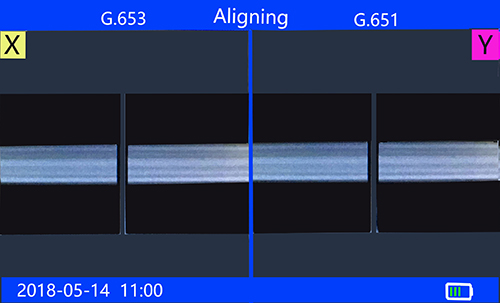Categories
Latest Blog
Single Mode Fiber VS Multimode Fiber
When the fiber core is so small that only light ray at 0° incident angle can stably pass through the length of fiber without much loss, this kind of fiber is called single mode fiber (SMF). The basic requirement for single mode fiber is that the core be small enough to restrict transmission to a single mode. This lowest-order mode can propagate in all fibers with smaller cores (as long as light can physically enter the fiber).
Multi mode fiber (MMF), is that that carry more than one mode are called multimode fibers.by comparison, is manufactured with core diameters as small as 50um and as large as hundreds of microns. And there are two types of multimode fibers. One type is step-index multimode fiber and the other type is graded-index multimode fiber.
The differences between single mode and multimode fiber mainly lies in fiber core diameter, wavelength & light source, bandwidth, color sheath, distance and cost.
Core Diameter
The most common type of single mode fiber has a core diameter of 8 to 10 μm and is designed for use in the near infrared (the most common are 1310nm and 1550nm). Please note that the mode structure depends on the wavelength of the light used, so that this fiber actually supports a small number of additional modes at visible wavelengths.
And multimode fiber core diameter is 50 µm and 62.5 µm typically, which enables it to have higher "light gathering" ability and simplify connections. The cladding diameter of single mode and multimode fiber is 125 µm.
(Figure 1: Core diameter of single-mode and multimode fiber)
Due to different core sizes, and the number of light modes that they transmit is also different. If you mix the two fibers, or connect them together directly, you’ll lose a large amount of optical loss, resulting in a link flapping or being down. Keep in mind that never mix different types of cabling randomly.And a fusion splicer which could identify the fiber type, just like Shinho X-900 and X-910 will be a great help for new starters.

The attenuation of multimode fiber is higher than SM fiber because of its larger core diameter. The fiber core of single mode cable is very narrow, so the light that passes through these fiber optical cables is not reflected too many times, which keeps the attenuation to a minimum.
Wavelength & Light Source
Due to the large core size of multimode fiber, some low-cost light sources like LEDs (light-emitting diodes) and VCSELs (vertical cavity surface-emitting lasers) that works at the 850nm and 1300nm wavelength are used in multimode fiber cables. While the single mode fiber often uses a laser or laser diodes to produce light injected into the cable. And the commonly used single mode fiber wavelength is 1310 nm and 1550 nm.
Bandwidth
Multimode fiber bandwidth is limited by its light mode and the maximum bandwidth at present is 28000MHz*km of OM5 fiber. While single mode fiber bandwidth is unlimited theoretically because it allows only one light mode to pass through at a time.
Color
According to the TIA-598C standard definition, for non-military applications, single mode cable is coated with yellow outer sheath, and multimode fiber is coated with orange or aqua jacket.
Distance
Single mode fiber is suitable for long-distance applications, while multimode optical fiber is designed for short-distance runs.Multimode optical fiber has a large core size and supports more than one light mode, its fiber distance is limited by modal dispersion which is a common phenomenon in multimode step-index fiber. While Single mode fiber doesn’t have modal dispersion, modal noise, and other effects that come with multimode transmission; single mode fiber can carry signals at much higher speeds than multimode fibers. They are standard choice for high data rates or long distance span (longer than a couple of kilometers) telecommunications which use laser diode based fiber optic transmission equipment.
When making a decision between single mode and multimode fiber cables, the first factor to consider is the fiber distance which you need actually. For example, in a data center, multimode fiber cables are enough for the distance of 300-400 meters. While in applications that require distance up to several thousands of meters, the single mode fiber is the best choice. And in applications that can use single mode and multimode fiber, other factors like cost and future upgrade requirements should be taken into consideration for your choice. Shinho X-910, S-16 are good for long distance splicing.It could splice MM fiber too.
Cost
Compared to single-mode transceivers, the price of multimode transceivers is nearly two or three times lower.
Shinho is a professional manufacturer of fusion splicers, we provide high quality, stable performance fusion splicing machine to worldwide.
© Copyright: SHINHO OPTICS LIMITED All Rights Reserved.